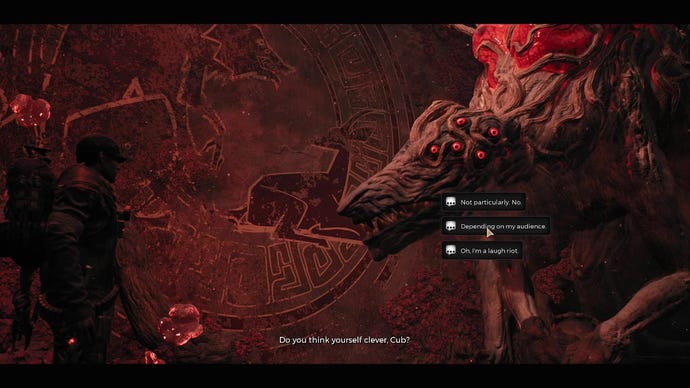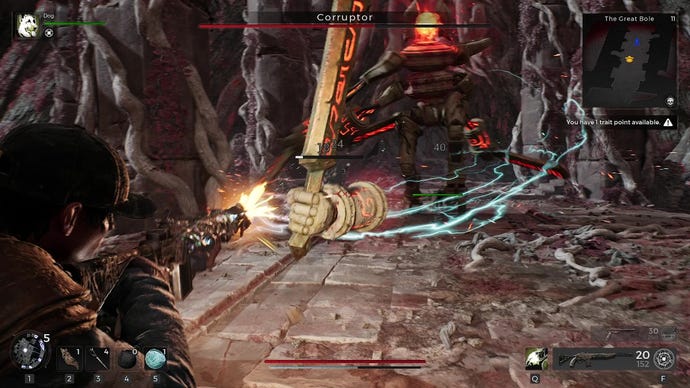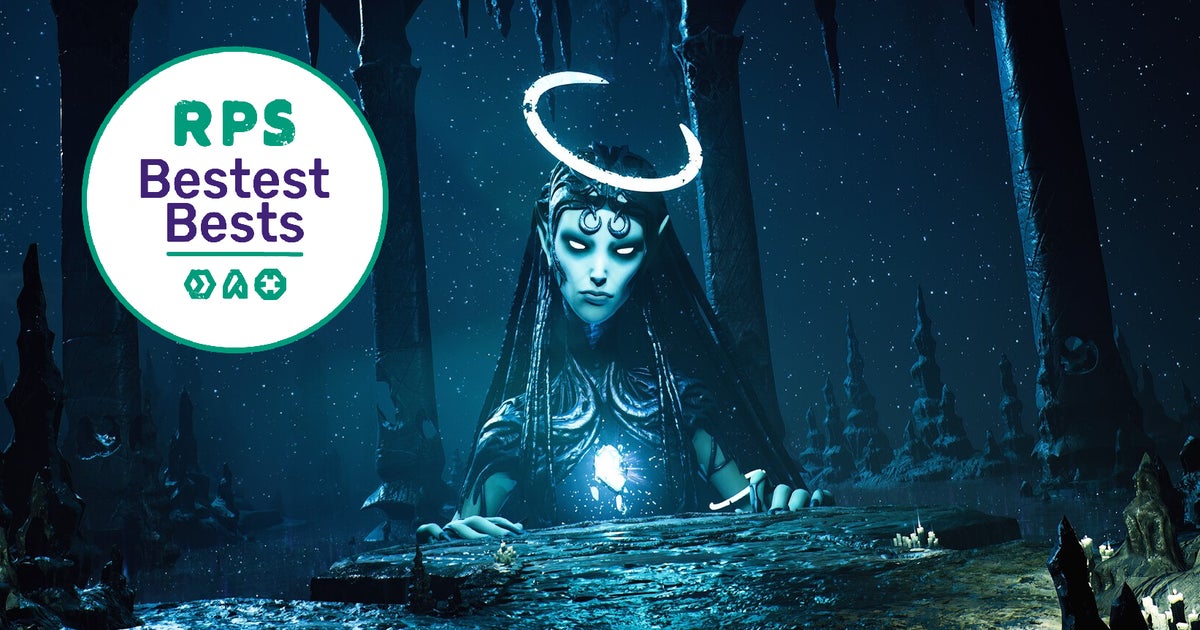Remnant II has a lot of moments that will have you saying things that aren’t suitable for children’s ears. Then again, given the mild horror themes in many levels and the general terror that the excellent enemy design invokes, you probably shouldn’t play it around kids in the first place. As a fan of this sequel’s predecessor, Remnant: From The Ashes, my hopes were unreasonably high, and not only did Remnant II completely meet my expectations, but it kept messing with what I thought. should to be waiting. It left me in a constant state of awe. It’s a furiously ambitious follow-up and has everything I could have wished for.
Remnant II shares much of its lifeblood with the first game. It’s a chaotic third-person shooter played solo or co-op with Soulslike aspects, roguelike aspects, and lots of its own personality and flair as well. There’s some melee combat you can lean into if you want, but the majority of the game is meant to be played as a shooter, with weapons ranging from pistols and machine guns to hand-held railguns and crossbows that fire five projectiles at once. Each weapon looks fiercer than the last, and it only gets crazier when you start modifying them. Modified weapons have a paid special ability that you can activate by brawling, and when unleashed you can summon tentacles from the ground or shoot a swarm of angry bees with your weapon. Basically, Remnant II not only wants you to look cool, but to feel cool, and it does that with aplomb.
Of course, you can’t start out as a badass. The tutorial not only teaches you what’s what, but also features humanity’s last survivors in a post-apocalyptic world. The Root is Remnant’s big bad, and it’s an interdimensional tree virus that infects worlds by corrupting its inhabitants and turning them against each other. Although you saved the Earth in Remnant 1, the root is still lurking, so you and your friends must fight your way back to the base of the game. The tutorial is a bit explanatory, but it acts as a great setup that helps beat the usual boredom of many sections of the tutorial, and you can skip it when creating future characters.
Let’s move on to character creation and archetypes, which is this game’s word for classes. The former are your usual RPG fare: a healer, a close-range fighter, a ranged shooter, and what’s basically a dude with a dog (obviously, I went with the one with the dog, since you can pet the dog whenever you want, and so can your co-op partners). These four are the standard classes, but are also secret archetypes tucked away among Remnant’s worlds and challenges, and you can equip a second archetype later in the game. It’s Remnant’s version of multi-ranking, and you can swap between them as you see fit at no extra cost.
Once your character is built, it’s time to travel the dimensional world. To save Earth this time, you must find a woman called Clementine, a certified badass who can hold the root at bay with just her mind. No one can guess where you actually begin this quest, as virtually every element of your adventure in Remnant II is procedurally generated. The first game had something similar, but the difference is that Remnant II’s procedural elements feel much more substantial and ambitious. The NPCs you encounter, the types of enemies you encounter, level layouts, potential storyline interactions – everyone will experience something different.

Whichever version you ride, your journey will begin in one of three different worlds, all of which are so different you’d be forgiven for thinking they were in different games. Yaesha is a returning planet from the first game and is a beautiful alien forest with weird wildlife everywhere (we kind of killed their gods in the first game as well, sorry about that). Then there’s the desolate Giger-esque desert planet called N’erud, an open-world planet where life has all but disappeared because the atmosphere is deeply toxic. The last of the three is Losomn, which is split into two halves, one of which is essentially bloodborne, with the locals very eager to get rid of you, and the other half is the Fae realm, where enemies are clad in magical armor and can grow ethereal eldritch wings.
These worlds are gruesomely mind-blowing on their own, each with two main storylines and a plethora of harrowing procedurally generated mini-dungeons and side-quests.
These worlds are gruesomely mind-blowing on their own, each with two main storylines and a plethora of harrowing procedurally generated mini-dungeons and side-quests. One I experienced in Losomn had me traversing an underground sewer in search of a spirit that seems to possess people and turn them against each other – which is sinister. This quest has two potential endings: you can keep an item the ghost drops or give it to a rambling, unhinged guy behind a sewer grate. Depending on your choices, you’ll receive different items and – as a bonus gift – a lingering sense of unease back and forth, which is, uh, lovely. These are not decisions that will affect the end point of your game, but they will change the way your journey feels and add to your growing anthology of personal game stories.
There are so many corners of Remnant II just waiting to be poked around. While traveling through Yaesha, I came across a completely optional mini-dungeon aptly called The Lament. After some trial and error with instant death traps, invisible pathways, locked doors, and some really clever puzzles, I figured I’d just get a good brownie sundae, a high five, and a dash point or something. But no, there were more mysteries to uncover. After picking up a few subtle clues, it turned out there was a hole in the ground hidden behind some rubble, and jumping there led me to another hidden key, another locked door, and a gruesome buzzsaw hallway, which eventually rewarded me with a cool set of armor. Exploration is always worth it in Remnant II, and it never feels more than in these smaller dungeons. It is a game that requires several parts.




Then there are the boss fights, and they are so good. Unlike the first game, bosses aren’t just bullet sponges anymore. They still have a gimmick to contend with, but they’re dramatic and relentless and very satisfying. One particularly memorable boss was just a collection of cubes rolling around an area trying to crush you, and I really had to scramble to shoot each of its weak spots. It ended up being a puzzle game where you have to figure out which weak spot to hit while dodging life-draining projectiles from above and instant death cube crushes from all around you.
Another boss throws corpses and shoots poisonous spit while trying to eat you directly. There’s another who crawls inside and outside the walls of a horrible asylum, sending explosive skull spiders at you while trying to steal your soul. Each boss is sublime, and honestly, their design and complexity make them some of the best bosses I’ve fought in any game.
Every aspect of Remnant II is excellent, and I’ve only scratched the surface. If you’re ready for round two, you can “relaunch” the campaign, which completely rebuilds the game with a random collection of areas and bosses. You also have the option to reroll planets if you wish, for those who just want an extra dose of their favorite area. Remnant II doubles everything its predecessor did, and the result is an incredible achievement. I will be playing it regularly for years.
This review is based on a review version of the game provided by publisher Gearbox Publishing


